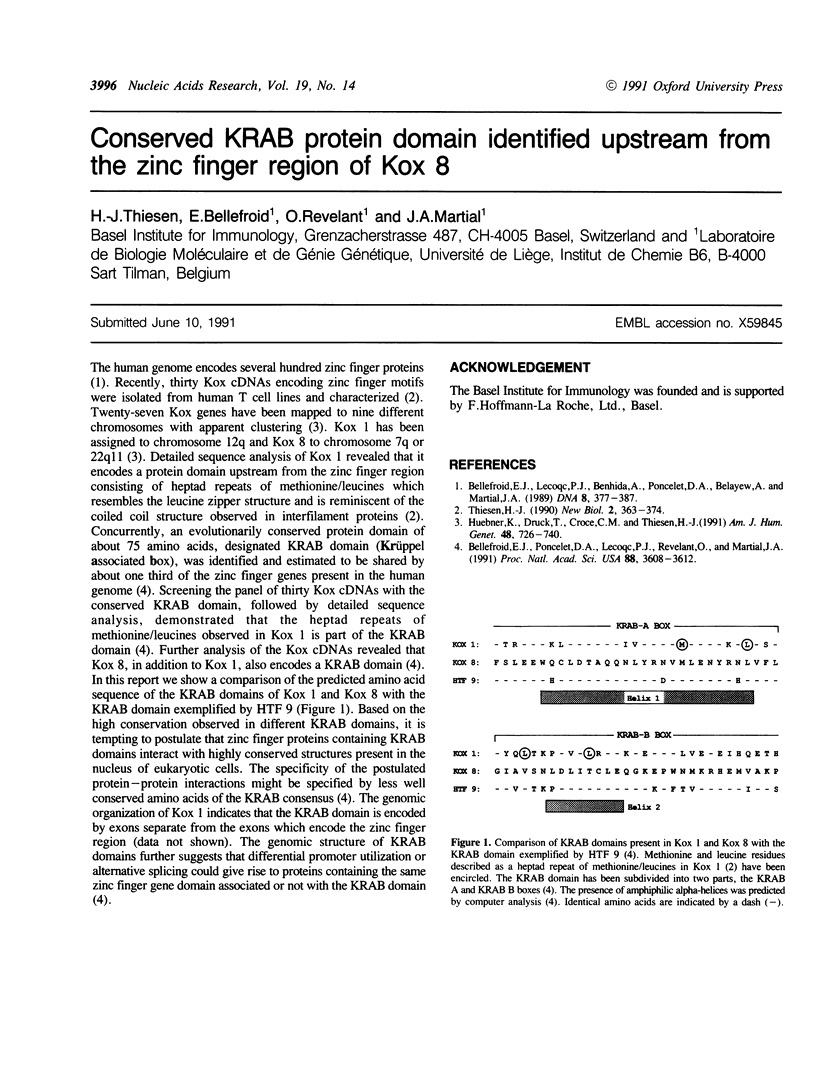Full text
PDFPage 3996

Selected References
These references are in PubMed. This may not be the complete list of references from this article.
- Bellefroid E. J., Lecocq P. J., Benhida A., Poncelet D. A., Belayew A., Martial J. A. The human genome contains hundreds of genes coding for finger proteins of the Krüppel type. DNA. 1989 Jul-Aug;8(6):377–387. doi: 10.1089/dna.1.1989.8.377. [DOI] [PubMed] [Google Scholar]
- Bellefroid E. J., Poncelet D. A., Lecocq P. J., Revelant O., Martial J. A. The evolutionarily conserved Krüppel-associated box domain defines a subfamily of eukaryotic multifingered proteins. Proc Natl Acad Sci U S A. 1991 May 1;88(9):3608–3612. doi: 10.1073/pnas.88.9.3608. [DOI] [PMC free article] [PubMed] [Google Scholar]
- Huebner K., Druck T., Croce C. M., Thiesen H. J. Twenty-seven nonoverlapping zinc finger cDNAs from human T cells map to nine different chromosomes with apparent clustering. Am J Hum Genet. 1991 Apr;48(4):726–740. [PMC free article] [PubMed] [Google Scholar]
- Thiesen H. J. Multiple genes encoding zinc finger domains are expressed in human T cells. New Biol. 1990 Apr;2(4):363–374. [PubMed] [Google Scholar]


